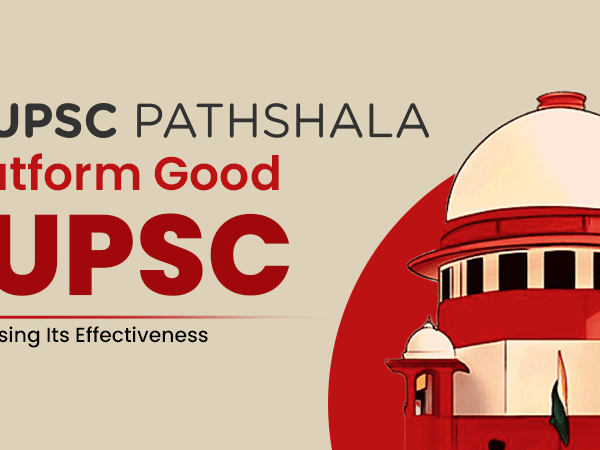
1. An increase in Bank Rate generally indicates that the market rate of interest is likely to fall. (CSE, 2013)
- Market rate of interest is likely to fall.
- Central bank is no longer making loans to commercial banks.
- Central bank is following an easy money policy.
- Central bank is following a tight money policy.
Ans: d)
Answer Explanation:
Central Bank is following a tight money policy. When RBI increases the bank rate, the cost of borrowing for banks rises and this credit volume gets reduced leading to decline in supply of money. Thus, increase in Bank rate reflects tightening of RBI monetary policy.
2) In context of Indian economy , ‘Open Market Operations’ refers to? (CSE, 2013)
- Borrowing by Scheduled banks from RBI.
- Lending by commercial banks to industry and trade.
- Purchase and sale of govt securities by the RBI.
- None of the above.
Ans: c)
Answer Explanation:
Purchase and sale of govt securities by RBI. OMOs are conducted by the RBI via the sale/purchase of government securities (G-Sec) to/from the market with the primary aim of modulating rupee liquidity conditions in the market.
3) The terms ‘Marginal Standing Facility Rate’ and ‘Net Demand and Time Liabilities’, sometimes appearing in news, are used in relation to? (CSE, 2014)
- Banking Operations
- Communication Networking
- Military Strategies
- Supply and demand of agricultural products.
Ans: a) Banking Operations
4) When RBI reduces Statutory Liquidity Ratio by 50 basis points , which of the following is likely to happen? (CSE, 2015)
- India’s GDP growth rate increases drastically.
- Foreign Institutional Investors may bring more capital in to our country.
- Scheduled Commercial Banks may cut their lending rates.
- It may drastically reduce the liquidity to the banking system.
Ans: c)
Answer Explanation:
Scheduled Commercial Banks may cut their lending rates. The RBI reduces SLR in an attempt to provide more liquidity to the banking system. Banks should use this headroom to increase their lending to productive sectors on competitive terms so as to support investment and growth. In order to increase their lendings, SCBs will have to reduce their lending rates.
5) With reference to Indian economy, consider the following:
1. Bank rate
2. Open Market Operations
3. Public debt
4. Public revenue
Which of the above is/are component(s) of Monetary Policy? (CSE, 2015)
- 1 only
- 2,3 and 4
- 1 and 2
- 1, 3 and 4
Ans: c) 1 and 2
6) What is/are the purpose(s) of Marginal Cost of Funds Lending Rate(MCLR) announced by RBI? (CSE, 2016)
i) These guidelines help improve the transparency in the methodology followed by banks for determining the interest rates on advances.
ii) These guidelines help ensure availability of bank credit at interest rates which are fair to the borrowers as well as banks.
Select the correct answer using the code given below:
- 1 only
- 2 only
- Both 1 and 2
- Neither 1 nor 2
Ans: a)1 only.
Answer Explanation:
As per the RBI, the MCLR will bring in the following benefits:
i) transmission of policy rate into the lending rates of banks to improve;
ii) computation of the interest rates by banks will get more transparent;
iii) cost of loan will be fairer to the borrowers as well as the banks.
iv) it will help the banks to become more competitive and enhance their long-run value.
7) What will be the impact on the Cash Reserves of commercial banks if RBI conduct a sale of securities?
- Increase
- Decrease
- Remain Constant
- None of These
Ans: d) Decrease
8) Under which qualitative tool, RBI fixes maximum limit to loan and advances that can be made, above which the commercial banks cannot exceed?
- Rationing of credit
- Margin requirement
- Loan-Value ratio
- Moral Suasion
Ans: a) Rationing of credit.
Answer Explanation:
Central Bank fixes credit amount to be granted. Credit is rationed by limiting the amount available for each commercial bank. This method controls even bill rediscounting. For certain purpose, upper limit of credit can be fixed and banks are told to stick to this limit. This can help in lowering banks credit exposure to unwanted sectors.
9) RBI, on behalf of government, issues MSS bonds to mop up extra liquidity from the market. This is same as Open Market Operations(OMO), but has a significant difference. What is it?
- Money raised from the market by MSS Bond is stored in government’s normal account.
- Money raised from the market by MSS Bond is stored in a separate account, known as MSS Account, which cannot be used for normal government expenditure.
- Money is not raised by MSS bonds
- None of the above
Ans: b) Money raised from the market by MSS Bond is stored in a separate account, known as MSS Account, which cannot be used for normal government expenditure.
Answer Explanation:
Market Stabilisation Scheme(MSS): This instrument for monetary management was introduced in 2004. Surplus liquidity of a more enduring nature arising from large capital inflows is absorbed through sale of short-dated government securities and treasury bills. The mobilised cash is held in a separate government account with the Reserve Bank. The instrument thus has features of both, SLR and CRR.
10) Reverse Repo Rate is a tool used by RBI to?
- Absorb liquidity
- Inject liquidity
- To keep liquidity at one level
- None of these
Ans: a) absorb liquidity.
Answer explanation:
Reverse Repo Rate: The rate at which the RBI is willing to borrow from the commercial banks is called reverse repo rate. If the RBI increases the reverse repo rate, it means that the RBI is willing to offer lucrative interest rate to commercial banks to park their money with the RBI. This results in a reduction in the amount of money available for the bank’s customers as banks prefer to park their money with the RBI as it involves higher safety. This naturally leads to a higher rate of interest which the banks will demand from their customers for lending money to them, thereby causing reduction in liquidity.




